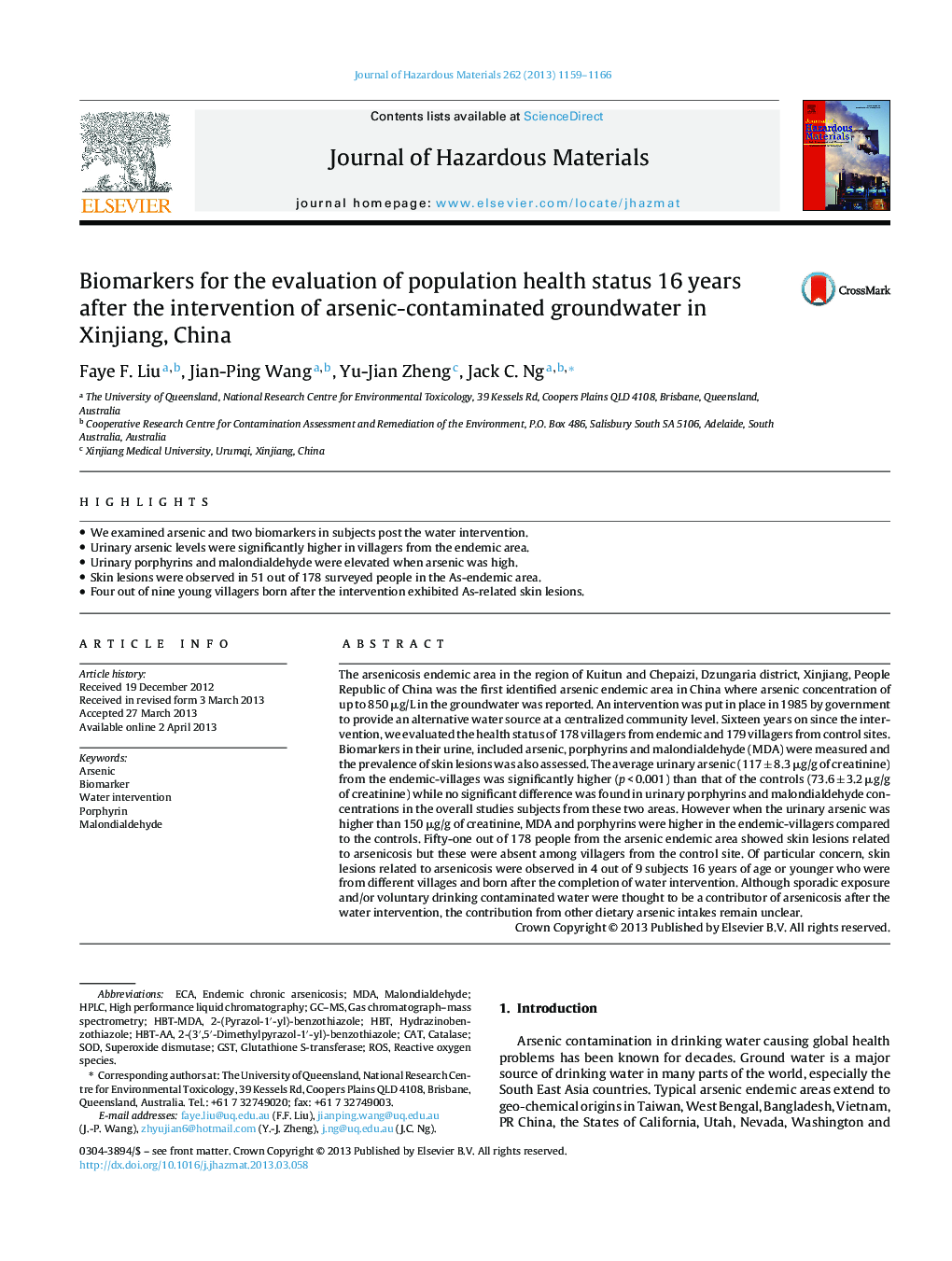| Article ID | Journal | Published Year | Pages | File Type |
|---|---|---|---|---|
| 577168 | Journal of Hazardous Materials | 2013 | 8 Pages |
Abstract
The arsenicosis endemic area in the region of Kuitun and Chepaizi, Dzungaria district, Xinjiang, People Republic of China was the first identified arsenic endemic area in China where arsenic concentration of up to 850 μg/L in the groundwater was reported. An intervention was put in place in 1985 by government to provide an alternative water source at a centralized community level. Sixteen years on since the intervention, we evaluated the health status of 178 villagers from endemic and 179 villagers from control sites. Biomarkers in their urine, included arsenic, porphyrins and malondialdehyde (MDA) were measured and the prevalence of skin lesions was also assessed. The average urinary arsenic (117 ± 8.3 μg/g of creatinine) from the endemic-villages was significantly higher (p < 0.001) than that of the controls (73.6 ± 3.2 μg/g of creatinine) while no significant difference was found in urinary porphyrins and malondialdehyde concentrations in the overall studies subjects from these two areas. However when the urinary arsenic was higher than 150 μg/g of creatinine, MDA and porphyrins were higher in the endemic-villagers compared to the controls. Fifty-one out of 178 people from the arsenic endemic area showed skin lesions related to arsenicosis but these were absent among villagers from the control site. Of particular concern, skin lesions related to arsenicosis were observed in 4 out of 9 subjects 16 years of age or younger who were from different villages and born after the completion of water intervention. Although sporadic exposure and/or voluntary drinking contaminated water were thought to be a contributor of arsenicosis after the water intervention, the contribution from other dietary arsenic intakes remain unclear.
Keywords
Related Topics
Physical Sciences and Engineering
Chemical Engineering
Chemical Health and Safety
Authors
Faye F. Liu, Jian-Ping Wang, Yu-Jian Zheng, Jack C. Ng,
